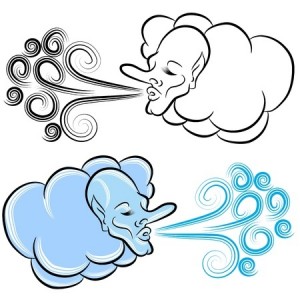 Who among us hasn’t used the old “it must be the wind” fallback when we flub a seemingly simple shot? Though this oft-used excuse can be baseless, there are plenty of occasions where the wind is in fact the cause of our wayward bullets.
Who among us hasn’t used the old “it must be the wind” fallback when we flub a seemingly simple shot? Though this oft-used excuse can be baseless, there are plenty of occasions where the wind is in fact the cause of our wayward bullets.
Luckily, firearm producer and hunting expert John Lazzeroni, of whom most avid sportsman are already well aware, has developed a clever little formula to account for those bothersome winds.
It goes as such: A 300 yard shot with direct crosswind, the bullet movement in inches will equal half of the total miles per hour of the wind. For example, if you shot at a deer standing 300 yards away when a 10 mph wind was blowing directly across from your right side, the bullet would move 5 inches to the left. Simple enough, right?
Now, according to Lazzeroni’s method, shot yardage has an enormous effect on the size of the bullet deviation. Per his method, a 400 yard shot with a 10 mph crosswind, the bullet movement will equal the TOTAL miles per hour of the wind; at 500 yards, the bullet movement will equal one-and-a-half times the wind speed; and at 600 yards, the bullet will move twice the wind speed. So, if the same shot was taken at 600 yards as opposed to 300 yards in the example given above, the bullet would move a whopping 20 inches!
This formula doesn’t layout exactly every possible wind speed scenario, but it does provide you with enough information so all you have to do is use a little logic when calculating your shooting specific scenario.
It stands to reason that the bullet movement also changes depending not only on the speed of the wind, but also on the angle of the wind. While the exact numbers are far too complex to calculate without instruments for even supremely intelligent hunters, a good general rule to follow is that the more the wind is blowing toward your face, the more the bullet deviation will be, and the more of a tail wind you have, the less the bullet will deviate from the desired target.
Because some of us don’t lug around an anemometer when we hunt, we may need some help when it comes to calculating the wind speed. Here’s where the always-helpful Beaufort Scale comes in handy.
Put simply, according to the scale, wind that is barely felt on the skin, but still moves smoke is moving at no more than 3 miles per hour. Once you are able to feel the wind on your face, it is moving at 4 miles per hour; if it is strong enough to move leaves and smaller twigs, wind speed is approximately 10 miles per hour; the wind will be strong enough to move dust, dirt, paper and smallish branches in the air at around 16 miles per hour; and trees will begin to sway when the wind hits 20 miles per hour.
These techniques might take a while to master, but your ability to shoot straight on those windy days will greatly improve once you actually do.
